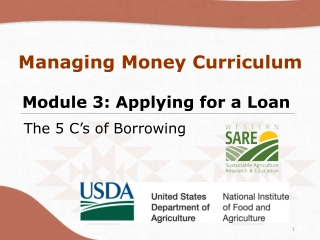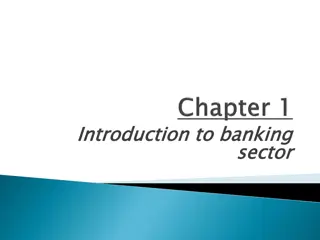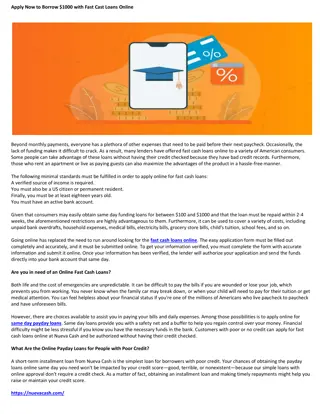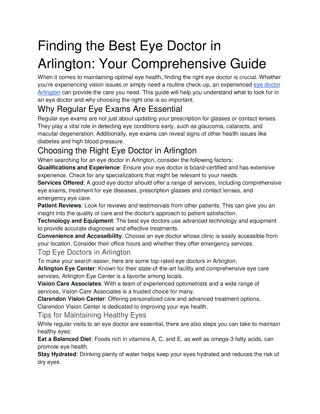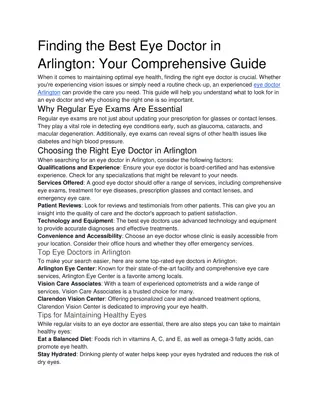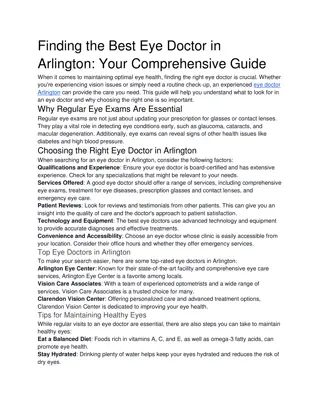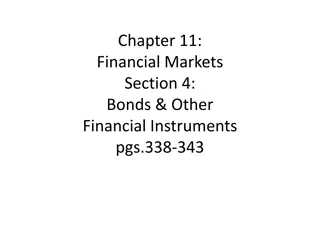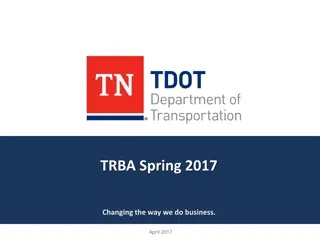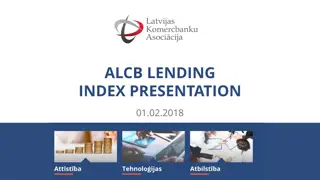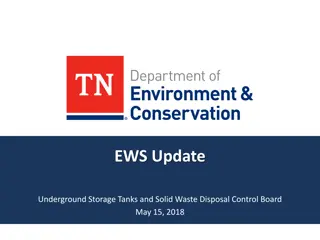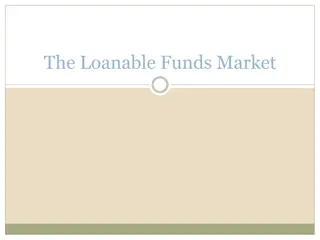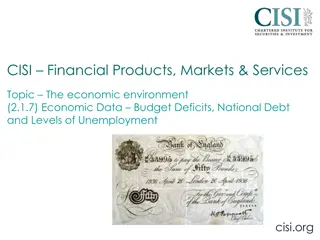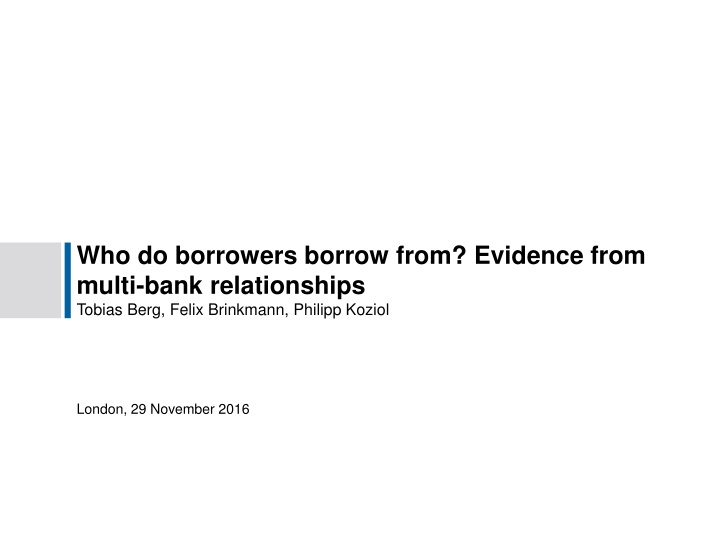
Borrowers' Lending Decision Influencers in Multi-Bank Relationships
Explore the determinants influencing borrower decisions in multi-bank relationships, including bank exposure, relationship history, and credit risk assessments. Discover insights from research studies and data analysis to understand borrower behavior in obtaining funds from different banks.
Download Presentation

Please find below an Image/Link to download the presentation.
The content on the website is provided AS IS for your information and personal use only. It may not be sold, licensed, or shared on other websites without obtaining consent from the author. If you encounter any issues during the download, it is possible that the publisher has removed the file from their server.
You are allowed to download the files provided on this website for personal or commercial use, subject to the condition that they are used lawfully. All files are the property of their respective owners.
The content on the website is provided AS IS for your information and personal use only. It may not be sold, licensed, or shared on other websites without obtaining consent from the author.
E N D
Presentation Transcript
Who do borrowers borrow from? Evidence from multi-bank relationships Tobias Berg, Felix Brinkmann, Philipp Koziol London, 29 November 2016
Motivation: Research Interest Set up: Borrower X needs new funds. He has relationship with two banks: bank A and bank B. Main interest: Which bank will provide these new funds? What are relevant determinants? Borrower X Determinants: We take a look into three candidates: - PD by bank - Current exposure volume with borrower X - Bank-borrower relationship Bank A Bank B Who do borrowers borrow from? 29 November 2016 Page 2
Motivation: An illustrative Example Probability of default (in %) Loan volume (in EUR mn) 15 2.5 12 2.0 9 1.5 6 1.0 3 0.5 0.0 2008q3 0 2008q3 2010q1 2011q3 2013q1 2010q1 2011q3 2013q1 Bank A Bank B Who do borrowers borrow from? 29 November 2016 Page 3
Determinants for Lending/Borrowing Decisions Optimistic bank hypothesis (lower average PD): - Broecker (1990), Riordan (1993), and Shaffer (1998) apply game theory models and find that banks are concerned that internal ratings might be too positive when granting new or additional loans - Kick et al. (2013) find that excessive credit growth increases the risk-taking of banks significantly as banks underestimate the risk level in the credit market High exposure hypothesis (diversification argument): - No evidence known Relationship hypothesis (bank-borrower history): - Petersen and Rajan (1994) and Berger and Udell (1995) find that borrowers with longer banking relationships are charged less by lenders - Cebenoyan and Strahan (2001) for loan s, Franke and Krahnen (2007) for CDOs and Gorderis et al. (2007) for CLOs find that derivatives are used to diversify credit risk in order to increase the availability of loans - Hirtle (2007) finds limited support for the idea that banks increase the supply of credit through credit derivatives Who do borrowers borrow from? 29 November 2016 Page 4
Data and Variable Creation Data: German credit register (MiMiK), Q3 2008 Q4 2013 (22 quarters) - Information on quarter level: EAD, PD, written derivatives, relationship length Filters to the dataset: Elimination of all - Non IRB banks - Borrowers from the financial institutions sector focus on real economy - Borrowers that have only a single bank-relationship - Defaulted borrowers - Borrowers-quarter combinations where the borrower was assigned a PD of less than 0.03% Dummy variables (1/0) on bank-borrower-quarter level: Yes if - Optimistic bank: assigned PD is lower than the average - High exposure: exposure is higher than the average - Relationship length: the relationship length is larger than the average - Relationship derivative: bank has a written derivate for the loan Who do borrowers borrow from? 29 November 2016 Page 5
Descriptive Statistics: Bank-Borrower Statistics Variable Unit N Mean Median Borrower characteristics Borrower loan volume EUR mn 175,393 38.46 12.75 Bank relationships Number 175,393 2.73 2 Dispersion PD Percent 175,393 1.33% 0.38% Bank characteristics Borrower relationships Number 830 577.01 311 Bank-borrower characteristics PD Percent 478,916 1.66% 0.59% Who do borrowers borrow from? 29 November 2016 Page 6
Descriptive Statistics: New Loans Average change in loan volume (positive changes only) 120% 109% 100% 100% 82% 73% 80% 65% 57% 56% 60% 40% 28% 20% 0% Optimistic Bank High Exposure Relationship Length Yes Relationship Derivative No Who do borrowers borrow from? 29 November 2016 Page 7
Empirical Design Baseline regression (estimated with/without FE) : log ???? ?????? = ?0+ ?1 ?????????? ???? ??????,?,? 1 + ?2 ??? ???????? ???? ??????,?,? 1 + ?3 ????????? ?? ????? ??????,?,? 1 + ?4 ????????? ?? ?????????? ??????,?,? 1 (+ ???,?+ ???,?) + ??,?,? Increase / decrease in loan volume: Baseline Regression conditional on an increase in loan volume Distinction of extensive and intensive margin: Extensive: regression of New Loan Dummy on explanatory variable from baseline (Grant loan: Yes/No); Intensive: baseline regression on the subset of new loans (loan volume) Credit growth: Baseline Regression conditional on credit growth or credit contraction Who do borrowers borrow from? 29 November 2016 Page 8
Results: Baseline Regressions Increase in loan vol Increase > 10% Increase > 20% Optimistic Bank 0.024*** 0.037*** 0.048*** High Exposure Bank -0.131*** -0.226*** -0.276*** Relationship Length 0.019*** 0.036*** 0.048*** Relationship Derivative 0.068*** 0.110*** 0.138*** Observations Adj. R-squared 129,374 0.14 57,688 0.13 36,510 0.13 all regressions with borrower x quarter FEs and bank x quarter FEs Who do borrowers borrow from? 29 November 2016 Page 9
Results: Extensive versus Intensive Margin (Increase in log loan volume > 20% (bank-borrow level)) Extensive margin: New loan dummy Intensive margin: Change in loan vol Dependent variable Optimistic Bank 0.004** 0.019 High Exposure Bank -0.048*** -0.362*** Relationship Length -0.000 0.050** Relationship Derivative 0.028*** 0.046* Observations Adj. R-squared 388,933 0.26 33,170 0.43 all regressions with borrower x quarter FEs and bank x quarter FEs Who do borrowers borrow from? 29 November 2016 Page 10
Results: Effect of Credit Market Conditions Quarters with credit growth Mean diff. Quarters with credit Contraction Depended Variable: Increase in loan volume Optimistic Bank 0.029*** 0.008 0.020*** High Exposure Bank -0.135*** -0.008 -0.127*** Relationship Length 0.022** 0.005 0.017*** Relationship Derivative 0.071*** 0.004 0.067*** Observations Adj. R-squared 54,850 0.12 74,524 0.16 all regressions with borrower x quarter FEs and bank x quarter FEs Who do borrowers borrow from? 29 November 2016 Page 11
Conclusion We find that A bank is more likely to provide more funds / a borrower is more likely to borrow from a bank, if - the bank is optimistic with the borrower (low PD) - the bank has an under average exposure to the borrower (diversification) - the bank has a larger relationship scope with the borrower The assigned PD only drives the decision phase to grant a loan / to lend from a bank (extensive margin), whereas the length of the bank-borrower relationship only determines the loan volume (intensive margin) Credit market conditions do not affect the loan granting / lending process, but are economically more pronounced during quarters of credit growth Our results are robust under a sample (median-) split by PD, loan volume and relationship length Who do borrowers borrow from? 29 November 2016 Page 12
Annex: Literature Berger and Udell (1995), Relationship Lending and Lines of Credit in Small Firm Finance, Journal of Business Broecker (1990), Credit-worthiness tests and interbank competition, Econometrica Cebenoyan and Strahan (2001), Risk management, capital structure and lending at banks, Journal of Banking and Finance Franke and Krahnen (2007), Default risk sharing between banks and markets: The contribution of collateralized debt obligations, The Risks of Financial Institutions Goderis, B., Marsh, I., Vall Castello, J., and Wagner, W. (2007), Bank behaviour with access to credit risk transfer markets, Research Discussion Papers, Bank of Finland Hirtle (2007), Credit derivatives and bank credit supply, Journal of Financial Intermediation Kick, Pausch and Ruprecht (2013), The Winner s Curse. Evidence on the Danger of Aggressive Credit Growth in Banking, Working Paper Deutsche Bundesbank Petersen and Rajan (1994), Estimating standard errors in finance panel data sets: Comparing approaches, Review of Financial Studies Riordan (1993), Competition and bank performance: a theoretical perspective, in Mayer, C., Vives, X. (Eds.), Capital Markets and Financial Intermediation Shaffer (1998), The winner s curse in banking , Journal of Financial Intermediation Who do borrowers borrow from? 29 November 2016 Page 13
Annex: Description of Variables Variable Unit Description Borrower characteristics Sum of the loan volume reported by all banks for a borrower in a particular quarter. Variable equal to one if a bank has a relationship with a borrower in a particular quarter. Measure for the across-bank dispersion of PD estimates, defined by the standard deviation of all PDs for each borrower per quarter Borrower loan volume Euro Bank relationships Dummy(0/1) Dispersion of PD Percent (%) Bank characteristics Number of borrowers reported by the bank in a particular quarter. All borrowers whose loans of the bank exceed 1.5 million at least once during the quarter have to be reported. Borrower relationships Number Bank-Borrower characteristics Probability of default over a 1-year horizon, measured from 0.00% to 100.00%. PD Percent (%) Optimistic Bank Dummy(0/1) Variable is equal to one if the demeaned log of PD is less than 0. Variable is equal to one if the log of Exposure of default for a bank if larger than the mean across all banks. Variable equal to one if the length of the relationship for a given bank- borrower pair is larger than the average of this borrower with all lender. High Exposure Bank Dummy(0/1) Relationship Dummy(0/1) Relationship Der. Dummy(0/1) Variable equal to one if the lender has a derivative for the credit. Number of Quarters that a credit relationship lasts for a given bank-borrower pair, measured from the date of the first relationship to the actual date. Length of relationship Number Who do borrowers borrow from? 29 November 2016 Page 14
Annex: Summary Statistics (1/2) Variable Level Unit N Mean Std.Dev. p25 Median p75 Borrower characteristics Borrower loan volume Borrower-Quarter EUR mn 175,393 38.46 74.33 5.12 12.75 37.58 Bank relationships Borrower-Quarter Number 175,393 2.73 1.43 2 2 3 Dispersion PD Borrower-Quarter Percent 175,393 1.33% 2.57% 0.12% 0.38% 1.13% Bank characteristics Borrower relationships Bank-Quarter Number 830 577.01 669.82 163 311 849 Bank-Borrower characteristics Bank-Borrower- Quarter Bank-Borrower- Quarter Bank-Borrower- Quarter Bank-Borrower- Quarter Bank-Borrower- Quarter Bank-Borrower- Quarter PD Percent 478,916 1.66% 3.28% 0.23% 0.59% 1.42% Optimistic Bank Dummy Dummy 478,916 0.53 0.50 0 1 1 High Exposure Bank Dummy Dummy 478,916 0.49 0.50 0 0 1 Relationship Dummy Dummy 478,916 0.59 0.49 0 1 1 Derivative Dummy Dummy 478,916 0.24 0.43 0 0 0 Length of relationship Number 478,916 27.53 22.90 9 21 43 Who do borrowers borrow from? 29 November 2016 Page 15
Annex: Summary Statistics (2/2) Panel A: Loan Volume (in EUR mn) 30 19,7 20 16,4 15,9 15,0 13,2 12,5 11,7 8,3 10 0 0 1 0 1 0 1 0 1 Optimistic Bank High Expsoure Relationship Length Relationship Derivatives Panel B: Increase in Loan Volume (in %) 120% 109% 100% 82% 73% 80% 65% 57% 56% 40% 28% 0% 0 1 0 1 0 1 0 1 Optimistic Bank High Expsoure Relationship Length Relationship Derivatives Who do borrowers borrow from? 29 November 2016 Page 16
Annex: Correlations for Determinants of banks lending decisions (1) (2) (3) (4) (5) (6) (7) (8) Panel A: Full Sample Panel B: Increase in log loan volume Relationship Derivate Dummy Relationship Derivate Dummy Optimistic Bank Dummy High Exposure Bank Dummy Relationship Dummy Optimistic Bank Dummy High Exposure Bank Dummy Relationship Dummy Variables Optimistic Bank Dummy 1.000 1.000 High Exposure Bank Dummy 0.036 1.000 0.031 1.000 Relationship Dummy -0.014 0.073 1.000 -0.013 0.081 1.000 Relationship Derivative Dummy 0.047 0.110 0.103 1.000 0.049 0.115 0.110 1.000 Who do borrowers borrow from? 29 November 2016 Page 17
Annex: Change in Credit Volume (YoY in %) Who do borrowers borrow from? 29 November 2016 Page 18
Annex: Determinants of Banks Lending Decisions (1) (2) (3) (4) (5) (6) log(Loan Volume) log(Loan Volume) log(Loan Volume) log(Loan Volume) log(Loan Volume) log(Loan Volume) Variables Optimistic Bank Dummy 0.019*** 0.019*** 0.024*** (2.93) (2.98) -0.115*** (3.95) -0.131*** High Exposure Bank Dummy -0.104*** (-6.18) (-6.38) 0.016** (2.14) (-6.08) 0.019*** (2.71) Relationship Dummy 0.015* (1.93) Relationship Derivative Dummy 0.073*** (10.22) 0.085*** (12.35) 0.068*** (9.41) Borrower x Quarter Fes Bank x Quarter FEs no no no no no no no no no no yes yes Observations 129,374 129,374 129,374 129,374 129,374 129,374 Adj. R-squared 0.00 0.01 0.00 0.01 0.02 0.14 Who do borrowers borrow from? 29 November 2016 Page 19
Annex: Increase versus Decrease in Loan Volume (1) (2) (3) (4) Increase in log loan volume log(Loan Volume) Increase in log loan volume > 10% log(Loan Volume) Increase in log loan volume > 20% log(Loan Volume) Increase in log loan volume > 30% log(Loan Volume) Variables Optimistic Bank Dummy 0.024*** 0.037*** 0.048*** 0.056*** (3.95) (4.28) (3.07) (2.77) High Exposure Bank Dummy -0.131*** -0.226*** -0.276*** -0.317*** (-6.08) (-8.38) (-8.43) (-8.65) Relationship Dummy 0.019*** 0.036*** 0.048*** 0.061*** (2.71) (3.42) (3.39) (3.35) Relationship Derivative Dummy 0.068*** 0.110*** 0.138*** 0.169*** (9.41) (11.78) (10.94) (11.10) Borrower x Quarter FEs yes yes yes yes Bank x Quarter FEs yes yes yes yes Observations 129,374 57,688 36,510 24,375 Adj. R-squared 0.14 0.13 0.13 0.15 Who do borrowers borrow from? 29 November 2016 Page 20
Annex: Extensive versus Intensive Margin (1) (2) (3) (4) (5) (6) Panel A: Increase in log loan volume > 10% (bank-borrower level) Panel B: Increase in log loan volume > 20% (bank-borrower level) Panel C: Increase in log loan volume > 30% (bank-borrower level) Extensive Margin Intensive Margin Extensive Margin Intensive Margin Extensive Margin Intensive Margin New Loan Dummy 0.004** (2.29) -0.048*** (-5.60) -0.000 (-0.05) 0.023*** (7.89) yes yes 388,933 0.24 log(Loan Volume) 0.013 (0.75) -0.322*** (-9.51) 0.051*** (3.70) 0.051** (2.33) yes yes 45,754 0.45 log(Loan Volume) 0.019 (0.87) -0.362*** (-10.26) 0.050** (2.43) 0.046* (1.94) yes yes 33,170 0.43 log(Loan Volume) 0.002 (0.04) -0.384*** (-10.61) 0.050 (1.56) 0.041 (1.09) yes yes 25,218 0.43 Variables New Loan Dummy New Loan Dummy Optimistic Bank Dummy 0.005** (2.25) -0.042*** (-4.94) -0.000 (-0.11) 0.033*** (8.76) 0.004** (2.44) -0.048*** (-5.31) -0.000 (-0.03) 0.028*** (8.96) yes yes 388,933 0.26 High Exposure Bank Dummy Relationship Dummy Relationship Derivative Dummy Borrower x Quarter FEs Bank x Quarter FEs yes yes Observations Adj. R-squared 388,933 0.29 Who do borrowers borrow from? 29 November 2016 Page 21
Annex: The Effect of Credit Market Conditions (1) (2) (3) (4) (5) (6) Panel A: Increase in log loan volume Panel B: Increase in log loan volume > 10% Panel C: Increase in log loan volume > 30% Quarters with Credit Contraction Quarters with Credit Contraction Quarters with Credit Contraction Quarters with Credit Growth Quarters with Credit Growth Quarters with Credit Growth Mean Diff. 0.008 (p=0.452) -0.008 (p=0.557) 0.005 (p=0.491) Mean Diff. 0.009 (p=0.478) -0.011 (p=0.485) 0.005 (p=0.627) Mean. Diff 0.024 (p=0.357) -0.011 (p=0.646) 0.008 (p=0.511) log(Loan Volume) log(Loan Volume) log(Loan Volume) log(Loan Volume) log(Loan Volume) log(Loan Volume) Variables Optimistic Bank Dummy 0.029*** (2.60) -0.135*** (-5.71) 0.022** (2.14) 0.020*** (3.49) -0.127*** (-5.75) 0.017*** (2.88) 0.042*** (3.15) -0.232*** (-8.34) 0.039*** (2.74) 0.033*** (3.68) -0.222*** (-7.74) 0.033*** (3.34) 0.061*** (2.85) -0.281*** (-8.25) 0.053*** (2.83) 0.037* (1.84) -0.271*** (-7.58) 0.045*** (3.48) High Exposure Bank Dummy Relationship Dummy Relationship Derivative 0.070*** 0.004 0.067*** 0.111*** 0.002 0.109*** 0.143*** 0.009 0.133*** Dummy (6.20) (p=0.896) (7.34) (7.13) (p=0.950) (6.63) (9.87) (p=0.764) (5.50) Borrower x Quarter FEs Bank x Quarter FEs yes yes yes yes yes yes yes yes yes yes yes yes Observations Adj. R-squared 54,850 0.12 74,524 0.16 25,570 0.11 32,118 0.15 16,423 0.11 20,087 0.15 Who do borrowers borrow from? 29 November 2016 Page 22
Annex: Robustness Test - Median Sample Split (1) (2) (3) (4) (5) (6) Panel A: PD Panel B: Loan volume Panel C: Relationship Small loan volume borrowers Large loan volume borrowers Borrowers with short relationships Borrowers with long relationships Low PD borrowers High PD borrowers Mean Diff. -0.024** Mean Diff. -0.005 Mean. Diff -0.017** log(Loan Volume) log(Loan Volume) log(Loan Volume) 0.021** log(Loan Volume) log(Loan Volume) 0.015** log(Loan Volume) Variables Optimistic Bank Dummy 0.010 0.034*** 0.025*** 0.032*** (1.17) -0.146*** (-5.70) (p=0.036) 0.031*** (p=0.004) (4.06) -0.115*** (-6.27) -0.149*** (-7.68) (2.37) (p=0.664) -0.033*** (p=0.009) (3.36) -0.117*** (-5.18) -0.094*** (-5.19) (2.08) (p=0.017) 0.071*** (p=0.000) (5.18) -0.166*** (-6.93) High Exposure Bank Dummy Relationship Dummy 0.025*** 0.011 0.013* 0.013* -0.010 0.023** 0.005 -0.025*** 0.030*** (2.74) (p=0.142) (1.93) (1.73) (p=0.304) (2.47) (0.99) (p=0.004) (3.02) Relationship Derivative Dummy 0.082*** (7.78) 0.027*** (p=0.008) 0.055*** (7.95) 0.053*** (5.78) -0.024 (p=0.139) 0.077*** (6.58) 0.041*** (4.91) -0.050*** (p=0.000) 0.091*** (10.38) Borrower x Quarter FEs Bank x Quarter FEs yes yes yes yes yes yes yes yes yes yes yes yes Observations Adj. R-squared 65,262 0.15 64,112 0.13 53,842 0.07 75,532 0.19 66,928 0.21 62,446 0.12 Who do borrowers borrow from? 29 November 2016 Page 23

